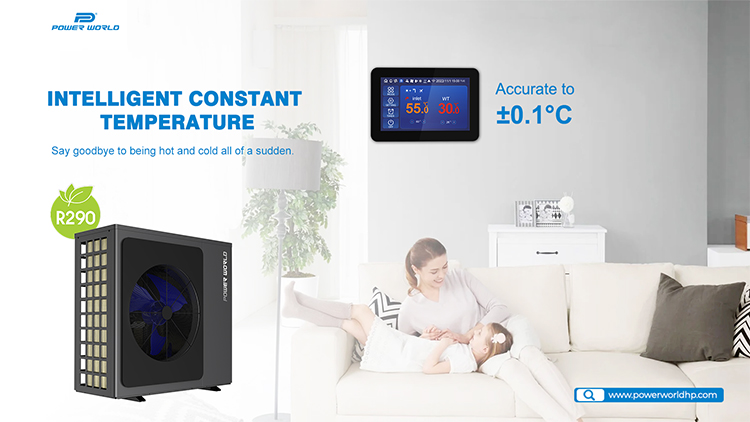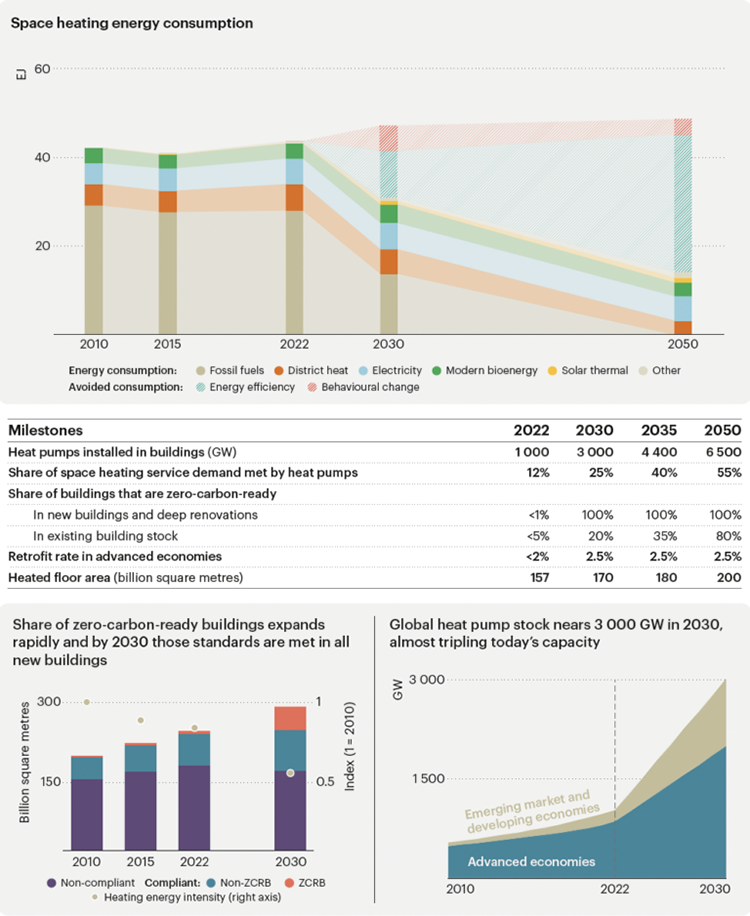
Important signs:
- Global carbon dioxide emissions hit a new high in 2022 and will peak in the next decade.
- Technologies such as electric vehicles and heat pumps dominate and play a crucial role in reducing emissions.
- In 2022, global heat pump sales will increase by 11%, with EU sales leading the way and China continuing to become the darling of the heat pump market.
- The latest version of the plan points out that due to the advancement of heat pump technology, it is expected to shift from the use of natural gas to the use of electric energy.
- In the transportation industry, sales of electric vehicles have increased, while in the power industry, the growth of solar photovoltaic power generation has also been witnessed.
In this latest version of the report, the IEA stated that the goal of controlling global temperature rise within 1.5 °C is not very high. In 2022, carbon dioxide emissions from the global energy industry reached a record high of 37 billion metric tons (Gt). , this figure is 1% higher than before the new crown, but according to the analysis, carbon dioxide emissions will peak within the next decade. Rapid advances in leading energy technologies mean that global demand for coal, oil, and natural gas will peak within the next decade, even without the implementation of any new climate policies. This information is encouraging, but it is not enough to limit global temperature change to 1.5 °C.
The fast-growing electrification sector powered by electric vehicles and heat pumps will provide nearly a fifth of the total energy sector’s share of net zero emissions in 2030.
The IEA report pointed out that in the past two years, solar photovoltaic installations and electric vehicle sales were consistent with the content of the zero net emissions report for 2025 released in 2021. Not only that, the report shows that global heat pump sales will grow by 11% in 2022. Among multiple markets, the most significant EU market, the annual growth rate is approximately 20% and has reached the goal of the 2030 zero net emission program. China remains the world's largest heat pump market.
According to the IEA, several conditions for achieving zero emissions already exist, but implementation needs to be accelerated. Increase sustainable energy use, improve energy efficiency, stop methane emissions, increase the use of electric equipment based on current technology, and achieve more than 80% net zero emissions by the end of 2030.
The latest version of the NZE scheme
The construction industry has undergone huge changes in the latest version of the NZE scheme. Geothermal retrofits will increase by approximately 30% and thermal energy consumption in the building industry will decrease by approximately 70% by 2050. Important events in these industries are as follows:
The number of heat pump installations in the construction industry in 2023 will be three times that of 2022, with an increase of 6.5% in 2023 compared with the same period in 2022, and the installed energy will reach 6500GW by the end of 2050. This means that from 2023 to 2030, the average annual sales growth rate needs to reach 20%. Starting in 2021, the annual sales growth rate of heat pumps in the EU will exceed 35%, which means that the growth rate required by the NZE scheme is feasible.
After 2030, all new buildings will achieve zero carbon emissions, and the renovation rate in developed economies will reach 2.5%.
Ultimately, by the end of 2030, 20% of existing buildings will have zero carbon emissions, and by the end of 2050, zero carbon emissions will exceed 80%.


